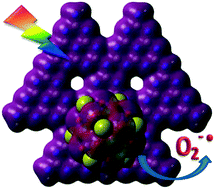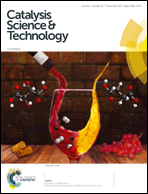Enhanced charge separation and photoactivity in heterostructured g-C3N4: a synergistic interaction in environmental friendly CaO/g-C3N4†
Abstract
Directional charge transfer across interfaces resulting in a depressed recombination rate is often assumed to explain the enhanced photoactivity of heterostructured g-C3N4, without proof. A novel and eco-friendly CaO/g-C3N4 composite exhibiting good activity is prepared to unravel the microscopic mechanism for enhanced charge separation. X- and Q-band EPR revealed no evidence for electron transfer. A strong agreement between photocatalytic activities and EPR intensities demonstrates that the main driving force for the photoactivity is the electron trapped in the g-C3N4 C2p state. Light-off EPR tracking showed that more C2p trapped electrons survived on CaO/g-C3N4 than on g-C3N4 surface, which accounts for the enhanced charge separation. Parallels between EPR and DFT demonstrate that fusion with CaO increases the C2p character for self-trapping photoexcited electrons, but at the expense of decreasing exciton dissociation efficiency. A synergistic interplay must be balanced for optimal performances of the heterostructured g-C3N4.



 Please wait while we load your content...
Please wait while we load your content...